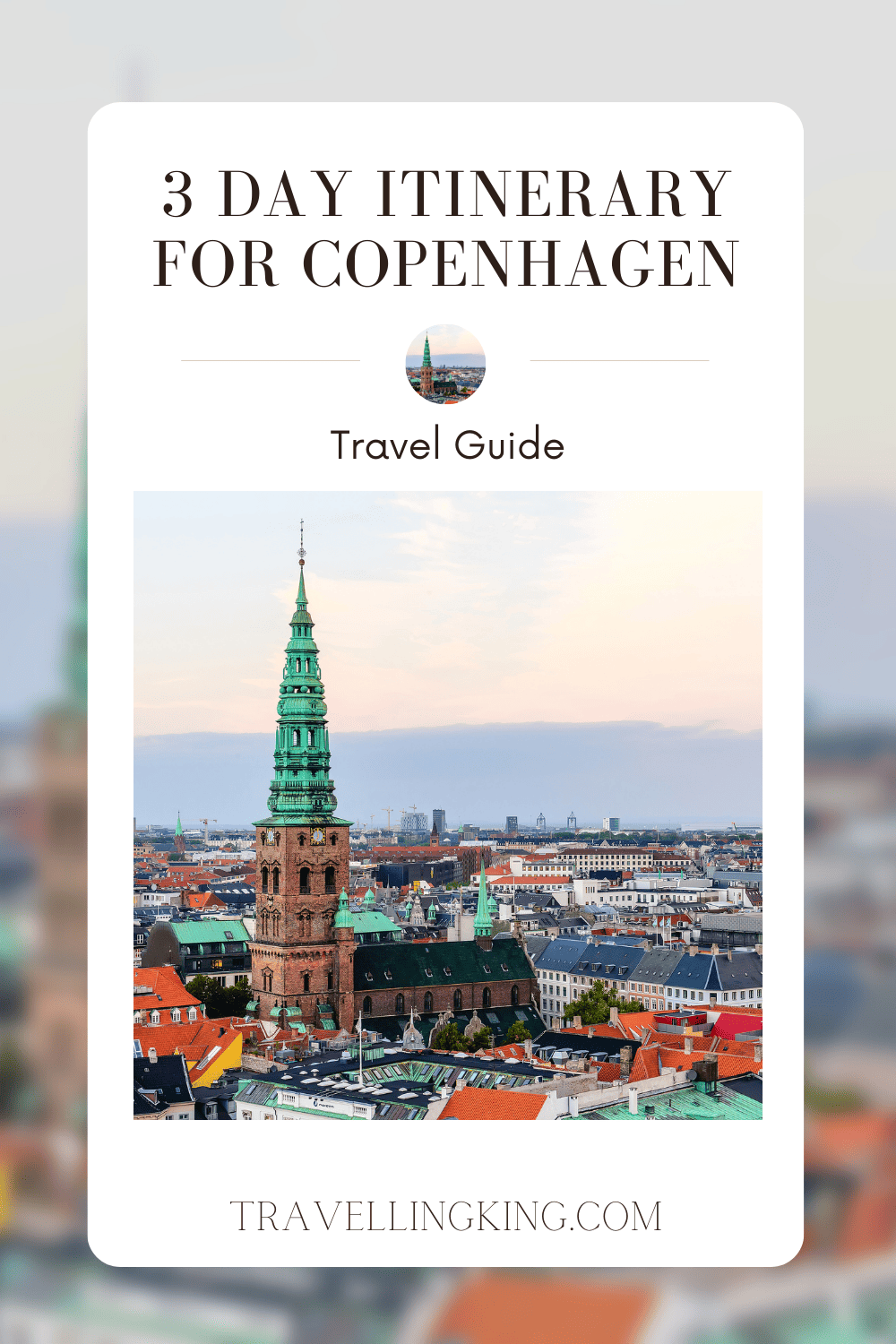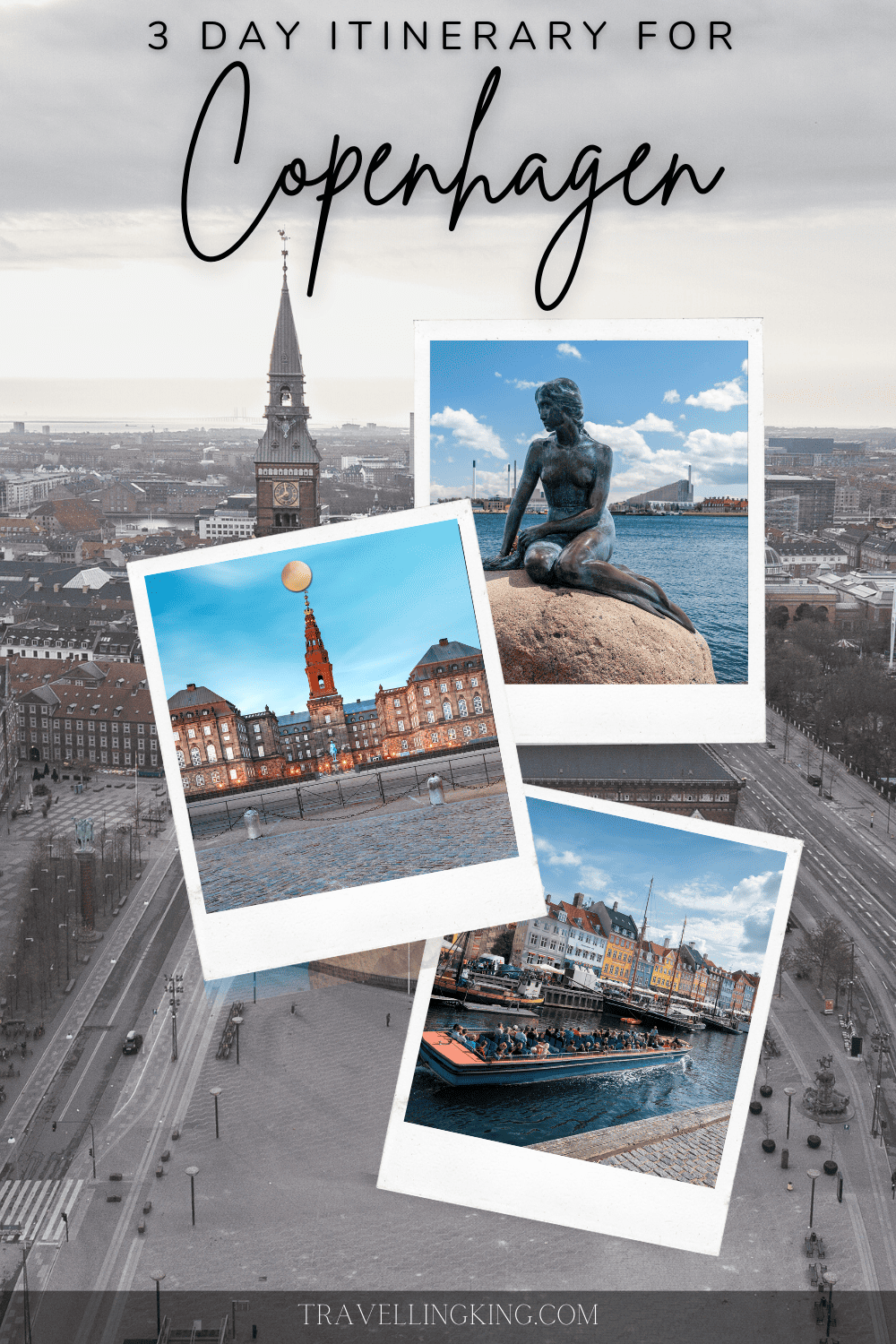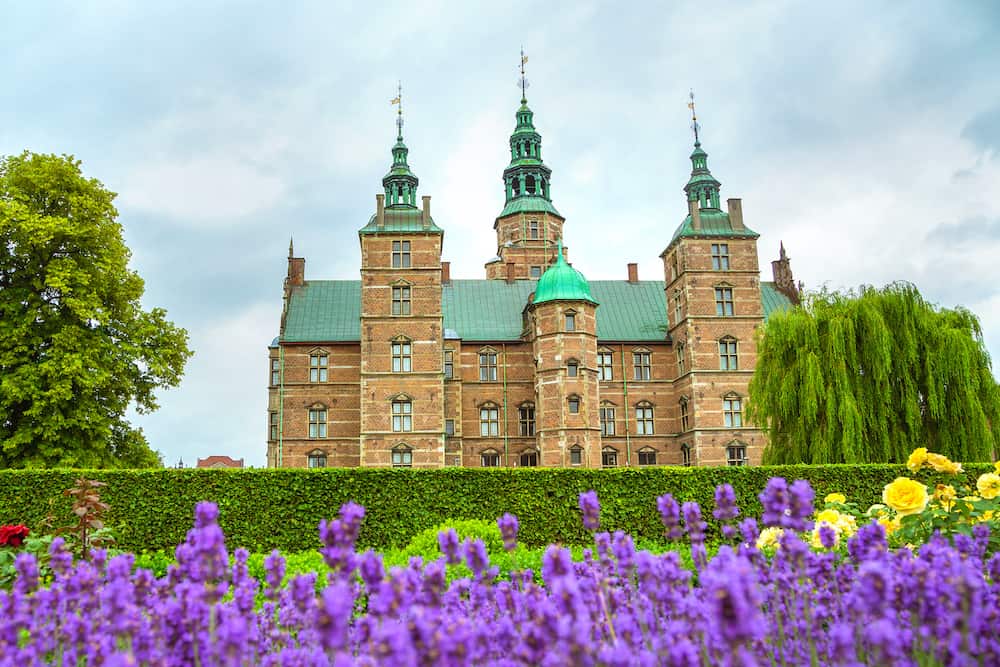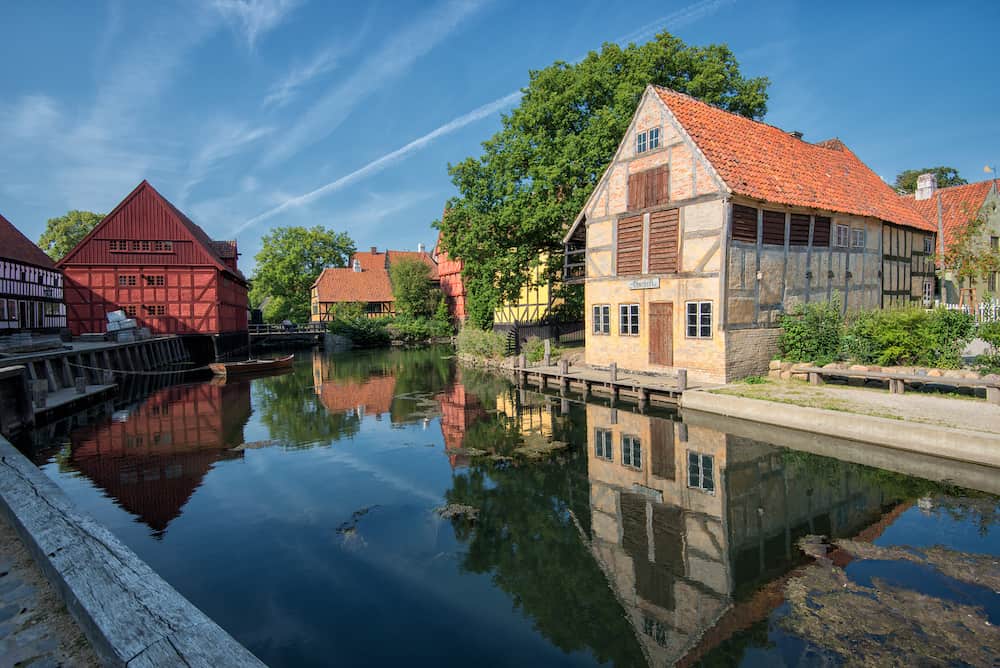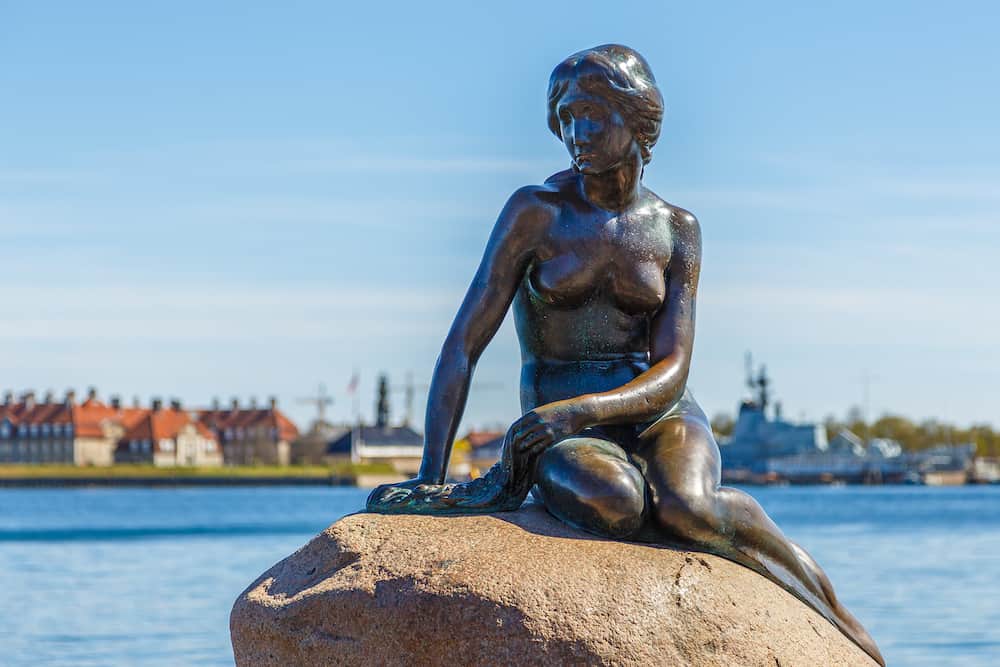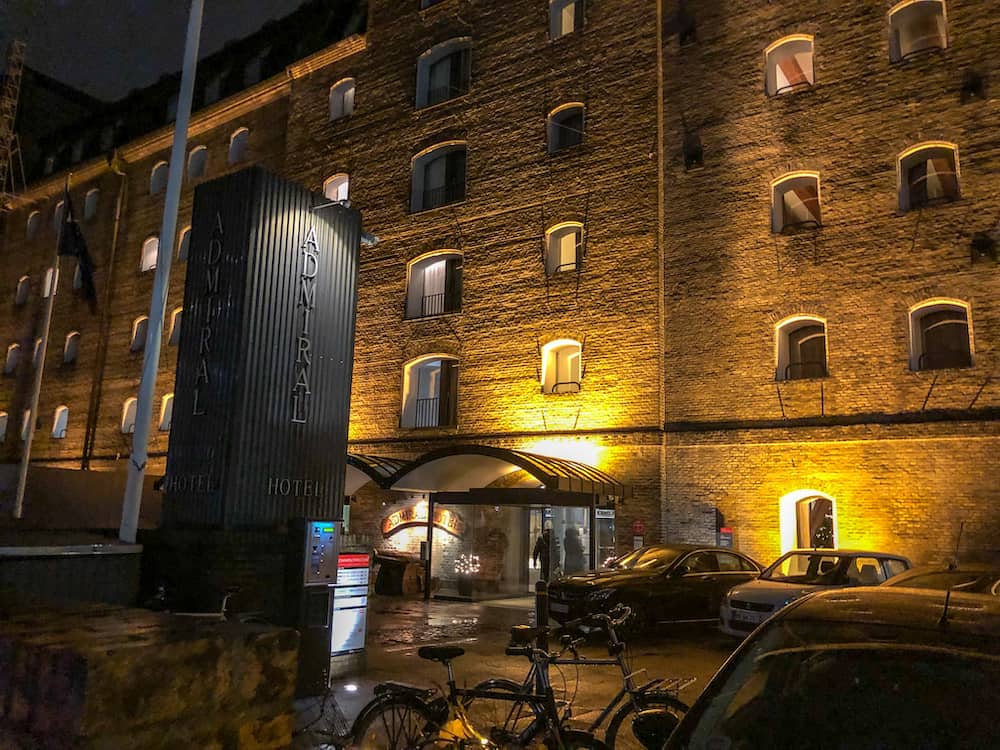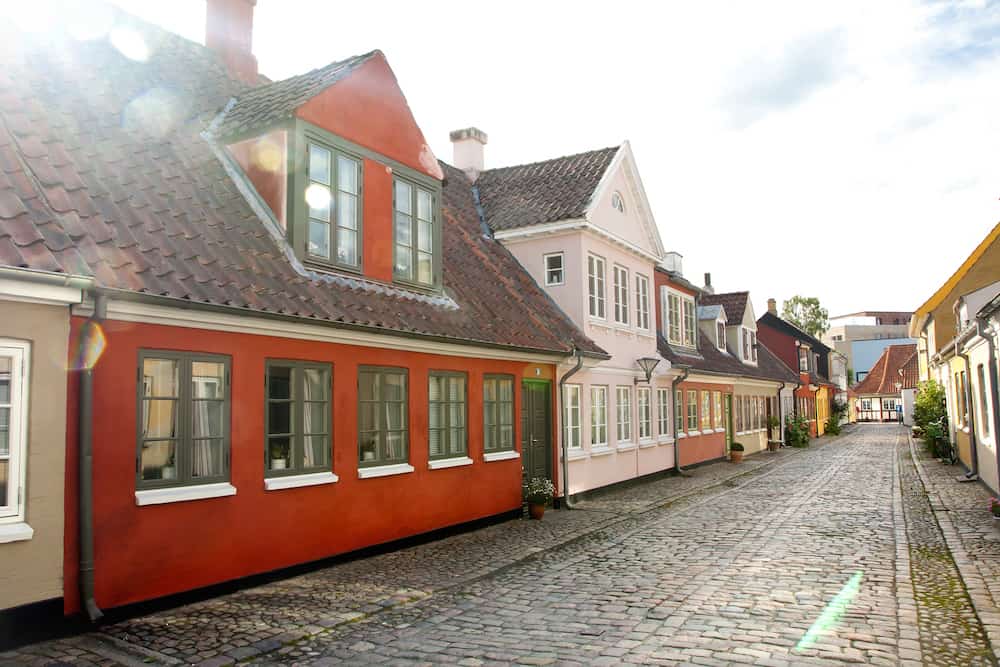3 Day Itinerary for Copenhagen
As sweet as a Danish custard slice… Your time in Copenhagen is about to be filled with warm waffles, black and white streets that take you back to the 1600s, cute coffee spots, extensive brunch options, canals similar to Amsterdam, city observatory’s and flower shops galore, just to name a few of the most notable things Copenhagen is known for.
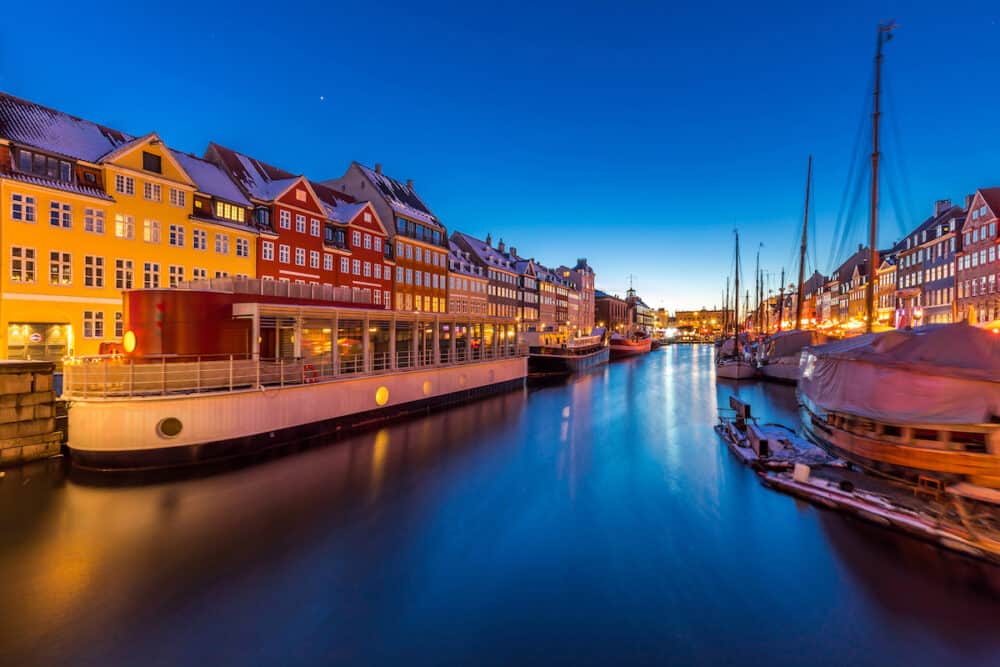
Let’s not forget the city’s outrageous, yet classy, community fashion sense that rivals that of Milan. With a little bit of sass and a whole lot of charm, this 3 day itinerary for Copenhagen will be one for the books.
Indre By (City Center) is the heart of Copenhagen, where you’ll find iconic attractions like Nyhavn, Tivoli Gardens, and the pedestrian street Strøget. It’s an area with a mix of historic charm and modern amenities.
Known for its hipster vibe, Vesterbro offers trendy restaurants, bars, and boutiques. It’s also home to the popular Kødbyen (Meatpacking District) with its nightlife scene.
A diverse and multicultural neighborhood, Nørrebro is known for its lively atmosphere, street art, and trendy cafes. It’s a great choice if you’re looking for an eclectic area.
Østerbro is a residential district that is family-friendly and offers a relaxed atmosphere. It’s known for its beautiful parks, including Fælledparken, and its proximity to the famous Little Mermaid statue.
Located on an artificial island, Christianshavn is characterized by its canals and picturesque waterfront. It’s home to the unique community of Christiania, an autonomous neighborhood known for its alternative lifestyle.
Take advantage of the cost-effective Copenhagen Card. To make the most of Denmark’s vibrant city. Simply purchase the Copenhagen Card which is good for 24, 48, 72, 96, or 120 hours to save money and gain access to more than 80 museums and attractions, including the famous Tivoli Gardens, for free.
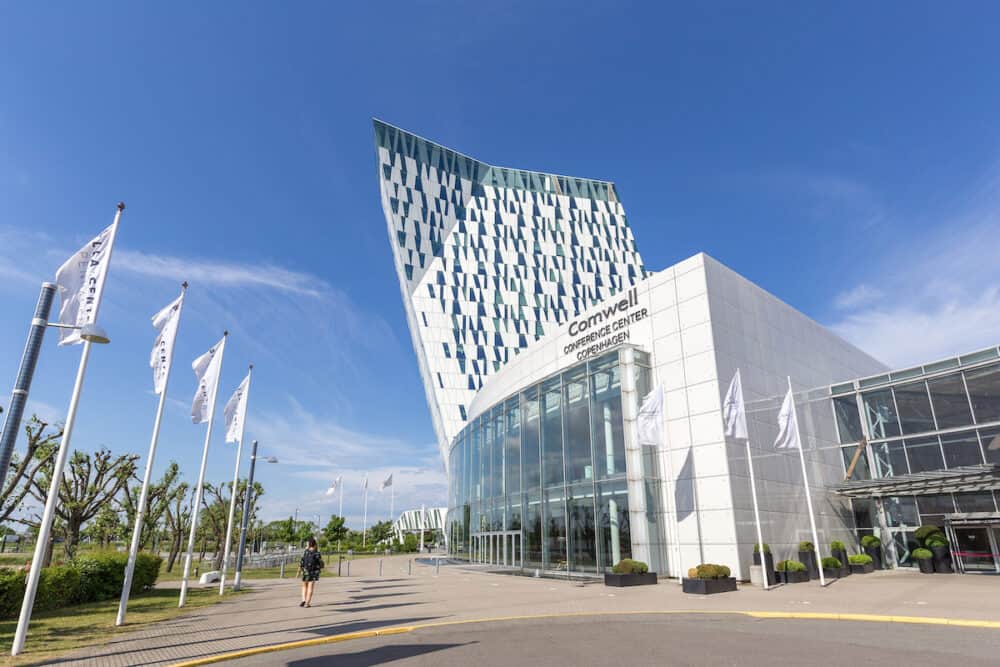
Spring (April to May) and Autumn (September to October) are seasons that offer milder temperatures, ranging from 10°C to 20°C (50°F to 68°F), and fewer crowds compared to summer.
Spring brings blooming flowers, while autumn offers beautiful foliage. It’s a good time to explore the city comfortably and enjoy outdoor activities without the peak season rush.
Copenhagen experiences cold and dark winters (November to March) with temperatures averaging between 0°C and 5°C (32°F to 41°F). However, if you don’t mind the chilly weather, visiting during this time can be rewarding.
The city is adorned with festive decorations, and you can experience the cozy Danish concept of hygge. Plus, winter is the off-peak season, so you’ll find lower hotel rates and fewer tourists.
If you’re wondering how many days in Copenhagen is ideal or how many days do you need in Copenhagen? Well it all depends on what your plans are? You could easily spend a few weeks in Copenhagen or a few months and still not see or do everything.
Below is a great guide on what to do in Copenhagen for 2 days because sometimes 2 days in Copenhagen is all you have, especially if you’re spending a weekend in Copenhagen or you’re travelling to Copenhagen on short stop over trip and want to be able to tour some of the main areas within Copenhagen.
Plan your trip
Save on fees abroad with the Wise Card—use it at ATMs, restaurants, and for flights or hotels in over 150 countries. Manage 40+ currencies in real-time with the Wise app.
Need Help Planning?
- Cheap Flights: Find the best deals.
- Accommodation: From hostels to luxury stays.
- Car Rental: Affordable options worldwide.
- Sightseeing Tours: Explore without breaking the bank.
- Travel Adapter: One adapter for all your needs.
- Travel Insurance: Don’t risk it—stay covered.
This post includes affiliate links. Read my full disclosure and content policy.
Overview Of 3 Days In Copenhagen Itinerary
Day 1 in Copenhagen
- Learn about Hans Christian Andersen
- City Hall Square
- Little Mermaid Statue
- Copenhagen Canal Tour
Day 2 in Copenhagen
- Old Stock Exchange
- Oldest Amusement Park
- Green Light District
- Tivoli Gardens
Day 3 in Copenhagen
- Christiansborg Palace
- Amalienborg Palace
- Rosenborg Castle
- The Copenhagen Cisterns
- Eat your way through Torvehallerne
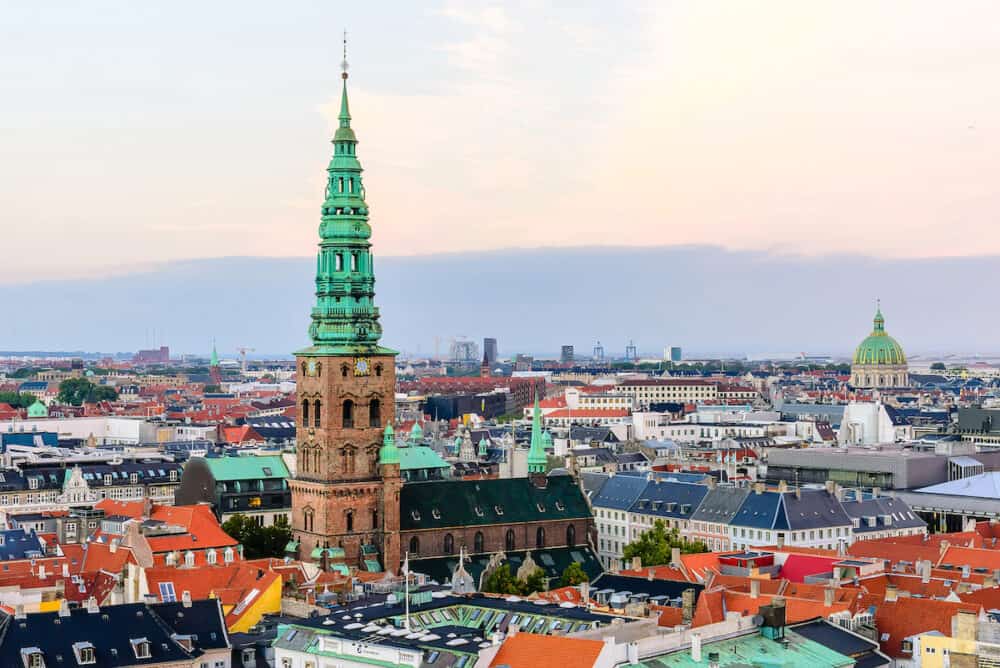
Day 1 in Copenhagen
Learn about Hans Christian Andersen
Kick off the itinerary with a historical figure – Hans Christian Andersen. He was a Danish author and poet, best known for his fairy tales and children’s stories.
Located in the city center of Copenhagen, the Hans Christian Andersen Fairy-Tale House museum is dedicated to the life and works of Hans Christian Andersen. It offers interactive exhibits, displays of his personal belongings, and a chance to experience his famous fairy tales in a multimedia format.
Situated in the historical neighborhood of Nyhavn, the H.C. Andersen Literature Center focuses on Hans Christian Andersen’s literary contributions. It features exhibitions on his fairy tales, manuscripts, illustrations, and a library dedicated to his works.
Visit the iconic statue of Hans Christian Andersen located in the City Hall Square (Rådhuspladsen). The statue portrays him sitting on a bench, and it has become a popular meeting spot for locals and tourists.
Explore the Royal Danish Library (The Black Diamond) and its impressive collection of Hans Christian Andersen’s original manuscripts, letters, and drawings. You can also find various editions of his works in different languages.
Has that inspired you to come up with your own children’s story?
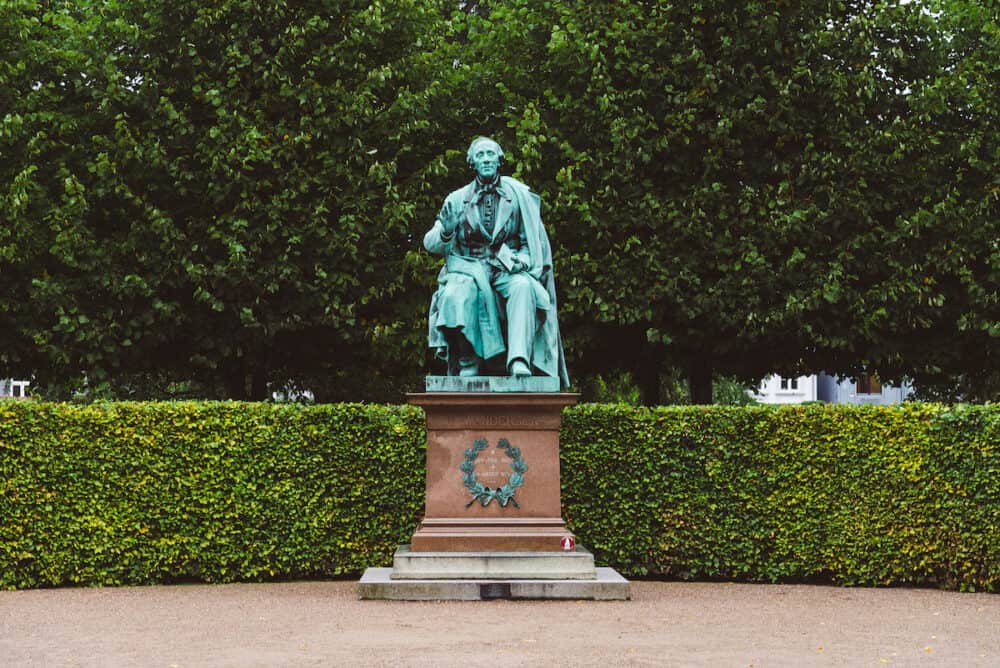
City Hall Square
Continue with a historical tour of Copenhagen by heading to City Hall Square, known as Rådhuspladsen in Danish, is a bustling public square that serves as a central hub and gathering place for locals and tourists.
Dominating the square is the Copenhagen City Hall, an impressive and iconic building constructed in the National Romantic style.
Completed in 1905, it features a tall clock tower that offers panoramic views of the city from the top. The City Hall is not only a striking architectural landmark but also serves as the administrative center for the municipality of Copenhagen.
You’ll also get to see Hans Christian Andersen once again. You can’t seem to escape him, can you?
City Hall Square hosts various festivals, concerts, and events throughout the year. It serves as a central venue for celebrations like New Year’s Eve, where thousands of people gather to witness the fireworks display.
The square also hosts music concerts, food festivals, and cultural events, attracting locals and tourists with its lively atmosphere. It’s a magical time as the village still glitters with Christmas decor, and still smells like warm, cinnamon buns.
Surrounding City Hall Square are numerous shops, restaurants, and cafes, making it a bustling area for shopping and dining. The square itself often has food stalls and vendors offering local street food and snacks. It’s a great place to grab a bite to eat, relax, and watch the world go by.
City Hall Square serves as an important transportation hub with various bus and metro connections, making it easily accessible from different parts of the city. It’s a common starting point for exploring Copenhagen, and its central location makes it convenient for navigating the city’s attractions.
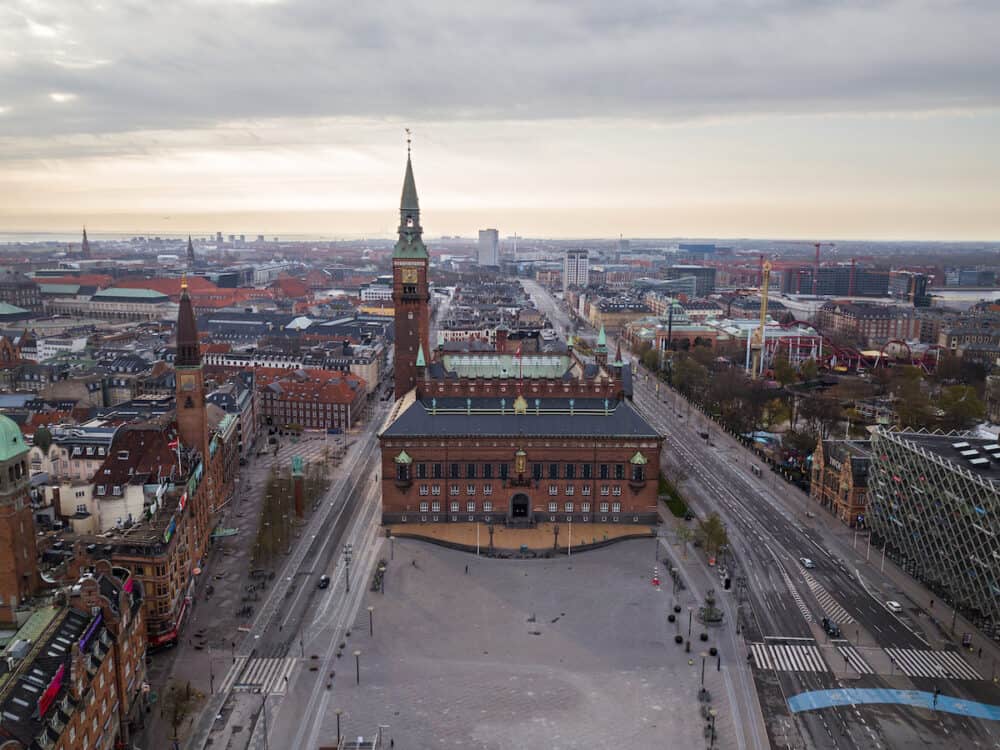
Little Mermaid Statue
Today, you’ll get to meet golden Ariel. The Little Mermaid Statue is a world-famous bronze sculpture located on a rock by the waterside in the Langelinie promenade in Copenhagen, Denmark.
The statue is based on the fairy tale “The Little Mermaid” by Danish author Hans Christian Andersen – ah there he is again!
It was commissioned by brewer Carl Jacobsen, who was inspired by the story and approached sculptor Edvard Eriksen to create the statue. It was unveiled on August 23, 1913, and has since become one of Copenhagen’s most recognizable symbols.
The statue depicts a mermaid sitting on a rock, gazing out to sea. It is about 1.25 meters (4.1 feet) tall and weighs around 175 kilograms (385 pounds).
The sculpture is known for its delicate and realistic details, portraying the mermaid’s graceful figure and contemplative expression. The statue symbolizes the longing for love and the sacrifices one may make for it, reflecting the themes explored in Andersen’s fairy tale.
The Little Mermaid Statue is located in a picturesque waterfront setting, providing a beautiful backdrop for visitors.
The Langelinie promenade offers scenic views of the harbor and is a popular spot for leisurely walks and bike rides. There are also cafés and restaurants nearby, allowing visitors to relax and enjoy the surroundings.
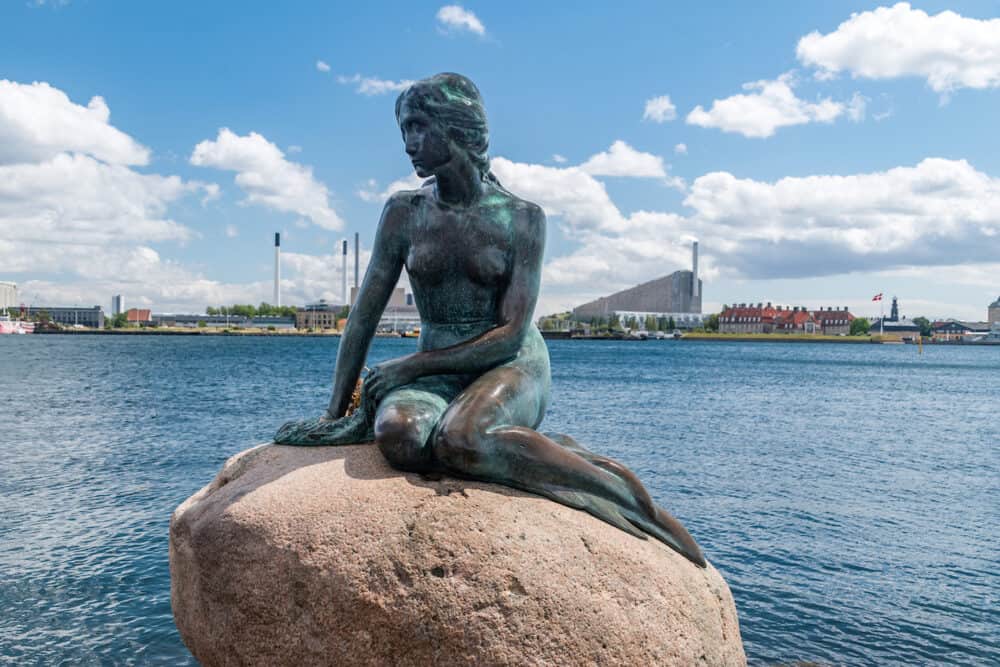
A Copenhagen Canal Tour
End off your first day in Copenhagen listening to the soft lap of water against the quay amongst golden beads of light.
A Copenhagen canal tour is a wonderful way to explore the city’s scenic waterways and get a unique perspective of its architecture, landmarks, and historical sites.
Copenhagen is crisscrossed by a network of canals and waterways, making it known as the “Venice of the North.” These canals offer picturesque views of the city, passing by charming buildings, bridges, and waterfront districts.
A canal tour allows you to check out Copenhagen’s iconic sights from a different angle. You’ll pass by the landmarks you saw today such as the colorful houses along Nyhavn, the famous Little Mermaid Statue, the historic Christianshavn neighborhood, and the beautiful Amalienborg Palace.
Copenhagen’s canal tour offers a chance to appreciate the city’s diverse architectural styles. You’ll see a mix of historic buildings, modern designs, and landmarks of cultural and historical significance.
Some notable sights include the Black Diamond (Royal Danish Library), Christiansborg Palace, and the picturesque Church of Our Saviour.
There are different types of canal tours available, ranging from large boats to smaller, more intimate vessels.
Some tours offer additional services, such as onboard dining, live music, or themed experiences like jazz cruises or sunset tours. You can choose the tour that best suits your preferences and desired experience.
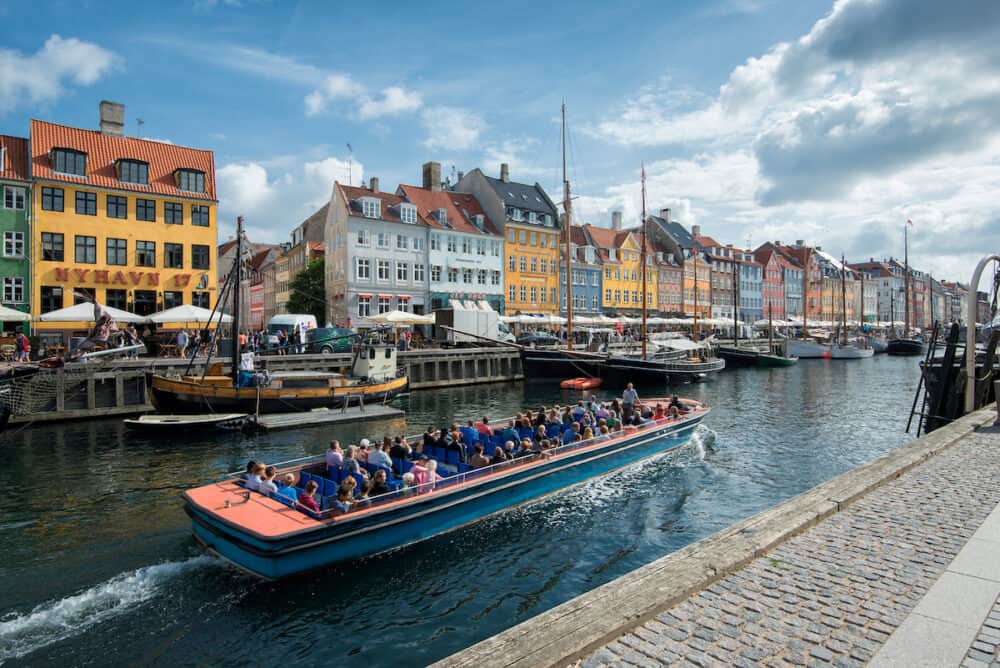
Day 2 in Copenhagen
The Old Stock Exchange
Investment fanatic? You’ll love this next destination. The Old Stock Exchange, known as Børsen in Danish, is an impressive historic building located in the middle of Copenhagen, Denmark. Nothing like starting the day by crunching numbers to get the brain active.
The Old Stock Exchange was built between 1619 and 1640 and was originally used as a trading house for merchants.
Designed by architect Lorentz and Hans van Steenwinckel the Younger, the building showcases a unique Dutch Renaissance style with intricate ornamentation and elaborately gabled roofs. Its iconic feature is the Dragon Spire, a distinctive tower adorned with four dragon tails entwined.
The exterior is richly decorated with sculptural elements, including statues, busts, and reliefs. Notable features include statues of the Four Temperaments (phlegmatic, choleric, melancholic, and sanguine), which represent different personality traits. The façade also includes depictions of Danish kings and historical figures.
The building surrounds a beautiful courtyard accessible through a grand archway. The courtyard is adorned with a central fountain featuring the statue of the Danish naval hero, Niels Juel. The architecture and ambiance of the courtyard make it a popular spot for events, photo shoots, and weddings.
Børsen Tower, (The Dragon Spire) atop the Old Stock Exchange is a distinctive feature visible from various parts of the city. The tower is adorned with four dragon tails, which represent the four seas over which Denmark once held dominion: the Baltic Sea, the North Sea, the Arctic Ocean, and the Atlantic Ocean.
This is a cool re-imagining of House of the Dragon in real life. The tower is not open to the public but remains an iconic symbol of Copenhagen.
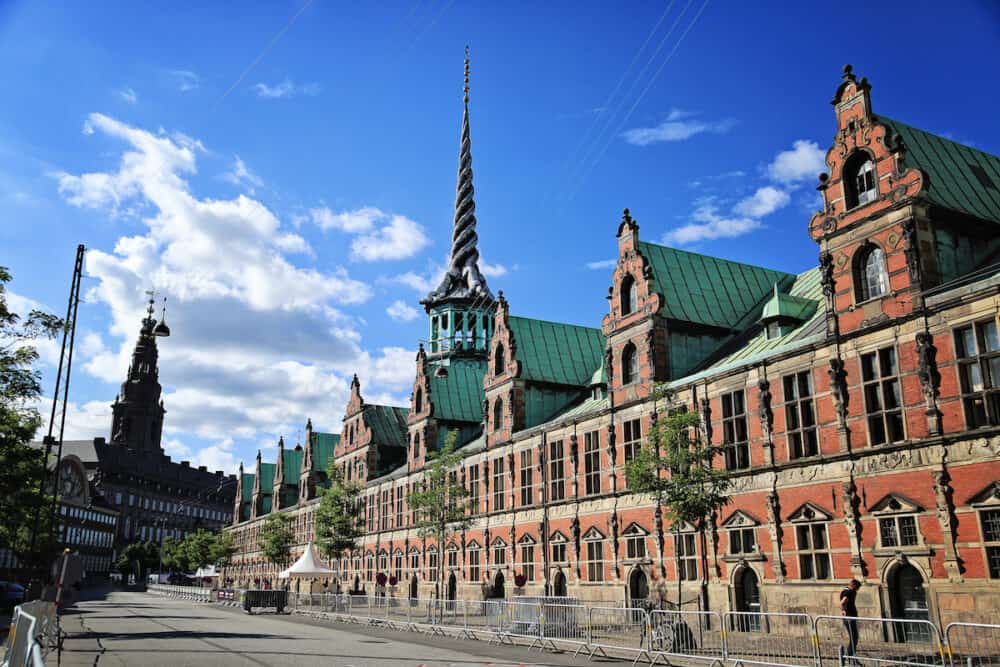
Oldest Amusement Park
Now that your neurons are firing, get your heart pumping too… The oldest amusement park in the world is Bakken, also known as Dyrehavsbakken or simply “Bakken,” located near Klampenborg, north of Copenhagen, Denmark.
Bakken traces its origins back to 1583 when it was established as a deer park by King Christian IV. It initially served as a royal hunting ground and later became a popular destination for the public.
Over the centuries, it gradually transformed into an amusement park, making it the oldest of its kind in continuous operation.
Bakken offers a unique and nostalgic atmosphere that sets it apart from modern amusement parks. It has retained its old-world charm and features traditional wooden architecture, quaint rides, and a warm, welcoming ambiance. This nostalgic vibe appeals to both locals and visitors who appreciate its historical significance.
Bakken offers a variety of rides and attractions for all ages. From classic carousels and bumper cars to thrilling roller coasters and Ferris wheels, there is something for everyone. The park also features funfair games, arcades, live entertainment, and numerous food stalls and restaurants serving traditional Danish fare.
One of Bakken’s notable features is the open-air theater, where visitors can enjoy live performances, including concerts, comedy shows, and theater productions. The park hosts a range of cultural events and festivals throughout the year, adding to its vibrant atmosphere.
Bakken is situated within the beautiful Dyrehaven, a large forested area known for its natural beauty and roaming deer herds. This scenic setting provides visitors with opportunities for leisurely walks, picnics, and nature exploration alongside their amusement park experience.
As you can see, there is no shortage of fun at Bakken.
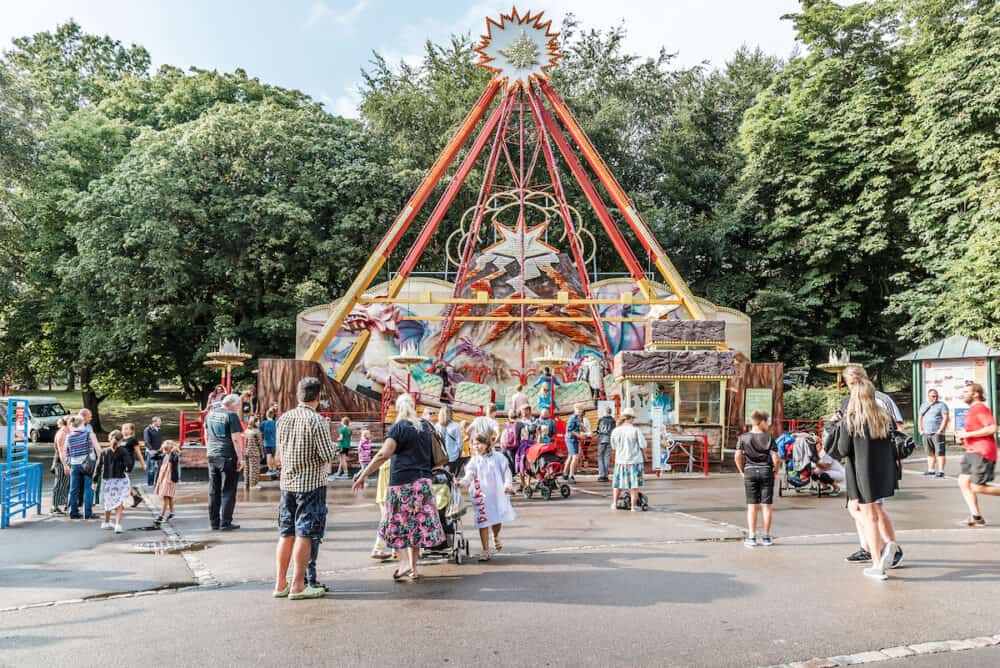
Christiania Green Light District
A family-friendly red light district awaits… Christiania Green Light District was established in 1971 when a group of squatters took over an abandoned military barracks in the Christianshavn district. The residents declared it a “Freetown” and created an experimental society with its own set of rules and values.
Christiania is known for its alternative lifestyle and counter-cultural philosophy. The community promotes values such as collective ownership, self-governance, artistic expression, and environmental sustainability.
It aims to create a social and cultural haven separate from mainstream society. You’re bound to have some interesting, thought-provoking conversations with these locals.
The architecture and design reflect its grassroot origins. The buildings have been repurposed from the original military barracks, resulting in a unique mix of structures. The community embraces a DIY (do-it-yourself) ethos, with residents creating their own homes and artistic installations.
Christiania is perhaps most famous for Pusher Street, an open-air market where cannabis (marijuana) was openly sold for many years.
Now you can see why it’s also known as the green light district. However, it’s important to note that the sale of cannabis was largely tolerated by authorities, but not officially legal.
In recent years, efforts have been made to regulate the cannabis trade and reduce its prominence within the community.
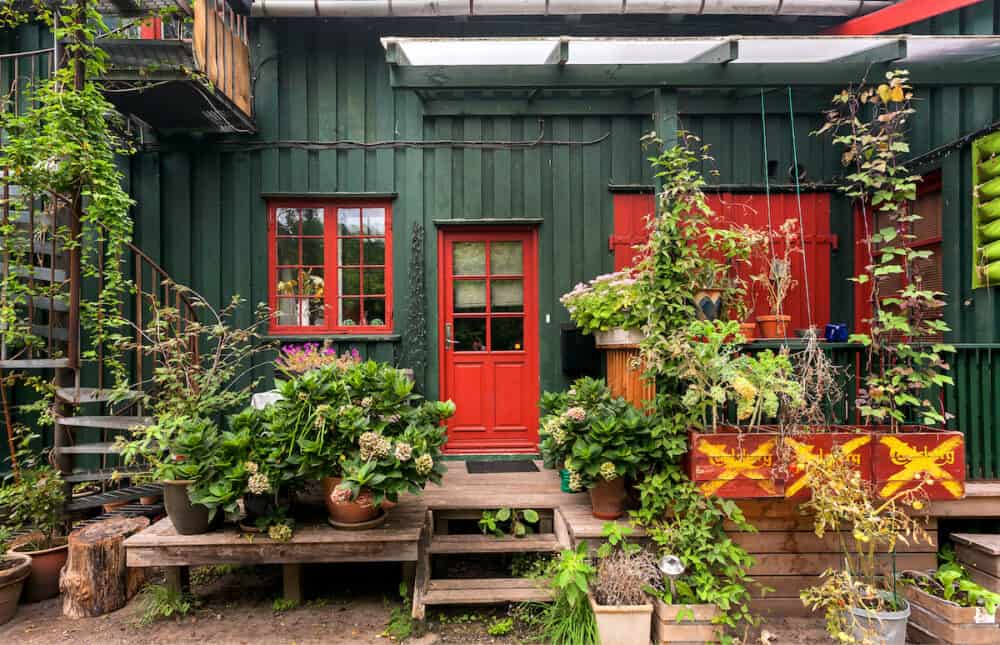
Tivoli Gardens
Tivoli Gardens is a world-renowned amusement park and pretty garden. It holds a special place in amusement park history as it opened its gates in 1843, making it the second-oldest operating amusement park in the world.
It was inspired by the gardens of Europe and aimed to provide a place where people could escape the constraints of everyday life and enjoy entertainment and relaxation. Time doesn’t seem to have changed…
Tivoli Gardens is known for its meticulously landscaped gardens, creating a lush and picturesque environment. Visitors can stroll through tree-lined pathways, enjoy vibrant flower beds, and relax on well-manicured lawns.
The park’s serene and scenic setting offers a delightful contrast to the thrill rides and entertainment options.
Tivoli Gardens offers a wide range of amusement rides and attractions suitable for visitors of all ages. From thrilling roller coasters and carousels to gentle family rides and children’s attractions, there is something for everyone.
Notable rides include the wooden roller coaster Rutschebanen, the vintage Ferris wheel, and the magical Flying Trunk ride inspired by Hans Christian Andersen’s fairy tales.
Tivoli Gardens is renowned for its live entertainment offerings, with numerous stages and venues hosting concerts, performances, and shows.
You can enjoy a diverse range of musical genres, theater productions, ballet performances, and cultural events throughout the year. The park’s open-air Pantomime Theater, with its iconic Moorish-inspired architecture, is a popular venue for performances.
Tivoli Gardens is also home to the Tivoli Concert Hall, a venue for classical music concerts, opera performances, and other cultural events.
The concert hall has hosted renowned artists and orchestras from around the world, making it a significant cultural institution within the park.
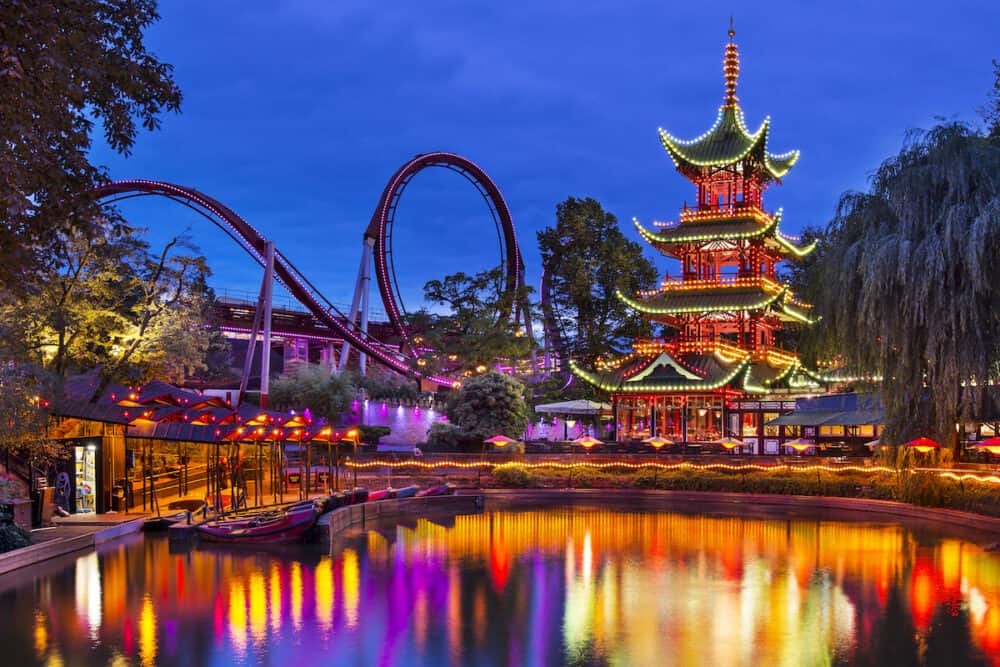
Day 3 in Copenhagen
Christiansborg Palace
For your final day in Copenhagen, you’ll end off your trip in style. But not just any style, super chic, elegant style.
Christiansborg Palace serves as the seat of the Danish Parliament, the Prime Minister’s Office, and the Supreme Court of Denmark. It is a hub of political activity and governance, making it a symbol of Denmark’s constitutional monarchy and democratic system.
The history of Christiansborg Palace dates back to the 12th century, when the first castle was built on the site.
Since then, the palace has undergone several transformations, with different parts being destroyed by fires and rebuilt throughout the centuries. The current neoclassical palace complex was completed in the early 20th century.
Christiansborg Palace is renowned for its architectural grandeur and opulence. The palace complex consists of multiple wings, courtyards, and towers, showcasing a mix of architectural styles, including Baroque and neoclassical elements.
The Great Hall, with its magnificent marble columns and intricate ceiling paintings, is a particularly impressive space.
Christiansborg Palace houses several royal reception rooms, which have been used for state visits, official ceremonies, and other important events. The Royal Reception Rooms are lavishly decorated, featuring exquisite furniture, artwork, and chandeliers, providing a glimpse into Denmark’s regal heritage.
Adjacent to Christiansborg Palace is the Royal Stables, which house the royal horses and carriages. You can explore the stables and learn about the history of Danish equestrian traditions. During special occasions and parades, the royal horses and carriages are used to transport the Danish royal family.
Beneath Christiansborg Palace lie extensive archaeological remains from earlier structures that once occupied the site. You can explore the underground ruins, which provide insights into the history and evolution of the palace complex over the centuries. But more on underground ruins later.
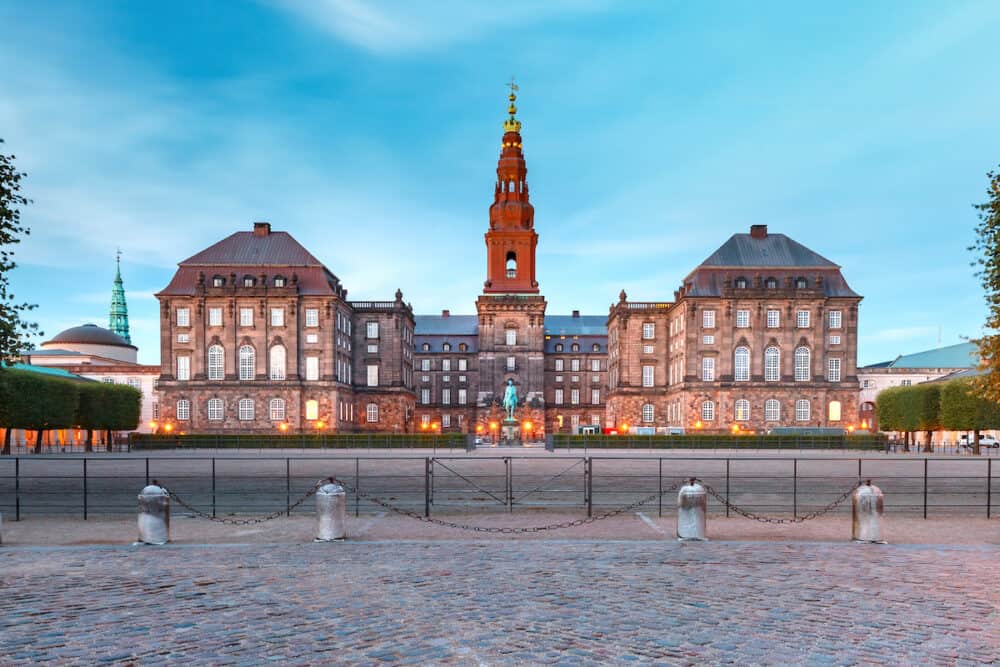
Amalienborg Palace
Onto palace number two… Amalienborg Palace serves as the primary residence of the Danish royal family, making it one of the most important symbols of Denmark’s monarchy.
The palace complex consists of four identical rococo-style palaces surrounding an octagonal courtyard, creating an elegant and harmonious ensemble.
The construction of Amalienborg Palace began in the 18th century when it was commissioned by King Frederick V.
The palaces were initially built as residences for the Danish nobility, but following a devastating fire in the Christiansborg Palace in 1794, the royal family moved to Amalienborg and made it their permanent residence.
One of the highlights of visiting Amalienborg Palace is witnessing the Changing of the Guard ceremony.
The Royal Life Guards, dressed in their distinctive uniforms, march from their barracks at Rosenborg Castle through the streets of Copenhagen to Amalienborg, where the changing ceremony takes place. This ceremonial tradition attracts visitors from around the world.
The palaces within the Amalienborg complex feature beautifully furnished and decorated royal apartments, which are occasionally open to the public for tours.
You can explore the opulent interiors, including grand reception rooms, private chambers, and the richly adorned Knight’s Hall. Perhaps gain some inspiration for your own elaborately decorated living room.
Amalienborg Palace is home to a remarkable collection of royal treasures, including fine artwork, antiques, royal regalia, and historical artifacts.
The Amalienborg Museum, located in one of the palaces, offers a chance to learn more about the Danish royal family’s history and view these prestigious collections.
Next to the Amalienborg Palace is the Marble Church (Frederik’s Church), an impressive neoclassical structure.
With its distinctive copper-green dome and elegant columns, the church complements the palace’s architectural style and adds to the overall grandeur of the area.
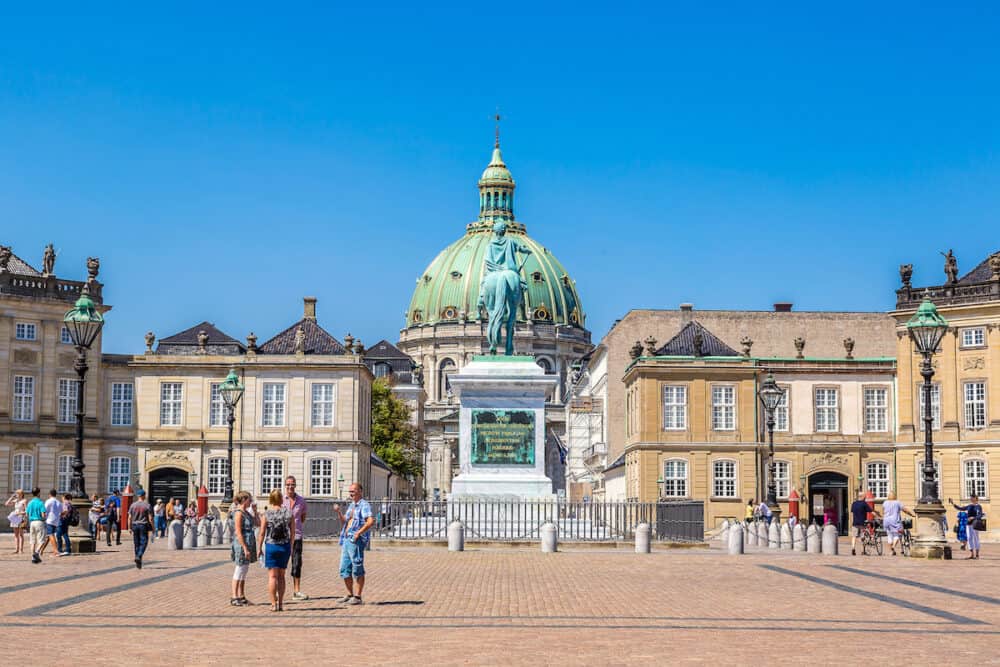
Rosenborg Castle
Onto the final castle of the Copenhagen trip…
Rosenborg Castle, originally built as a summer residence in the early 17th century by King Christian IV, holds great historical significance. Over the years, it served as a royal residence, a treasury, and a location for important royal ceremonies and events.
The castle’s architecture combines Dutch Renaissance and Baroque styles, creating an impressive and elegant structure. Its copper-clad spires, intricate ornamentation, and beautiful gardens make it a visual masterpiece.
Rosenborg Castle is renowned for housing the Danish Crown Jewels and the Royal Regalia. Visitors can explore the castle’s opulent rooms, including the King’s Chamber, Queen’s Chamber, and Knights’ Hall, where the treasures are displayed.
The collection includes crowns, scepters, orbs, and other regal items. Just imagine being alive in this era.
Surrounding Rosenborg Castle is the lush King’s Garden (Kongens Have), one of the oldest and most beautiful parks in Copenhagen. The garden features perfectly manicured lawns, symmetrical flower beds, and wrought-iron resting points.
Within the King’s Garden, visitors can find the Royal Gardens and Orangery. The gardens showcase a variety of plant species and ornamental elements, while the Orangery houses exotic plants during winter months.
If you’ve watched Queen Charlotte (the latest prequel in The Bridgerton Story) you may remember how the Queen does not pick her own oranges. Do you think this applied in Copenhagen too?
The Rosenborg Castle now serves as a museum, offering an immersive experience of Danish royal history. The museum exhibits not only the crown jewels but also royal portraits, silverware, weapons, and other artifacts that provide insights into the lives of Danish royalty.
Conveniently, the Rosenborg Castle and Amalienborg Palace are linked through a charming walk known as the King’s Garden Trail. This scenic route takes visitors from Rosenborg Castle through the city to Amalienborg Palace, providing an opportunity to explore more of Copenhagen’s royal landmarks.
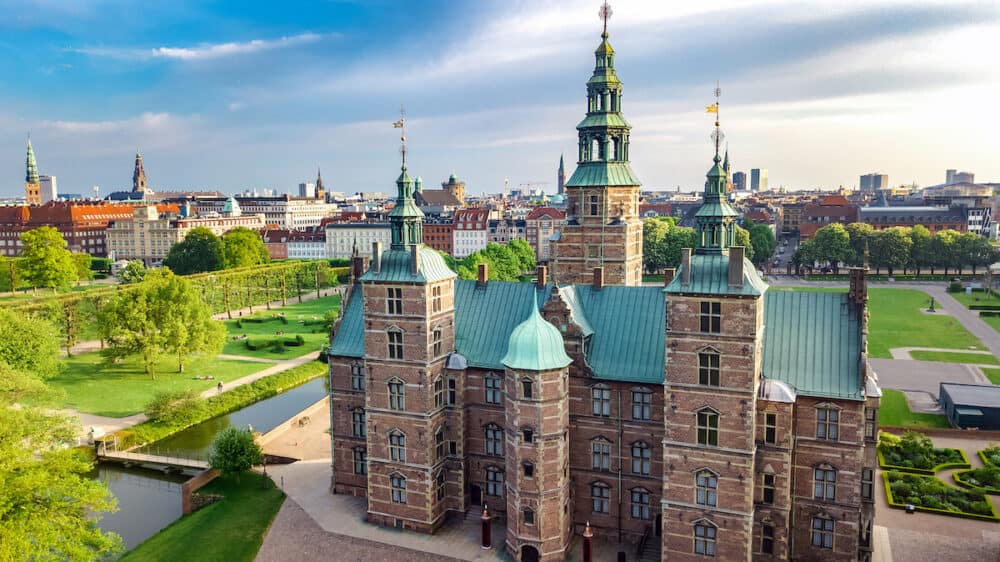
The Copenhagen Cisterns
You’ll be heading into the depths of Copenhagen’s streets for this one. A unique attraction to visit in Copenhagen is the Cisternerne, also known as The Cisterns. It is an underground exhibition space located beneath the Søndermarken Park in Frederiksberg, Copenhagen
The Cisternerne is housed in the former underground reservoirs that supplied water to Copenhagen in the past. These massive cavernous spaces have been transformed into a unique exhibition venue, creating an atmospheric setting for contemporary art installations and exhibitions.
The underground environment of The Cisterns provides a fascinating and evocative atmosphere. The low lighting, damp walls, and echoes enhance the immersive experience, giving visitors a sense of being in a hidden underground world.
The Cisternerne showcases a variety of contemporary art installations and exhibitions that often interact with the unique space. Artists utilize the darkness, the acoustics, and the peculiar architecture of the underground reservoirs to create thought-provoking and engaging experiences for visitors.
The Cisternerne is located in the scenic Søndermarken Park, providing a beautiful, natural setting that complements the subterranean experience. Visitors can explore the park’s picturesque landscapes, walking paths, and tranquil ponds before or after their visit to The Cisterns, creating a well-rounded outing.
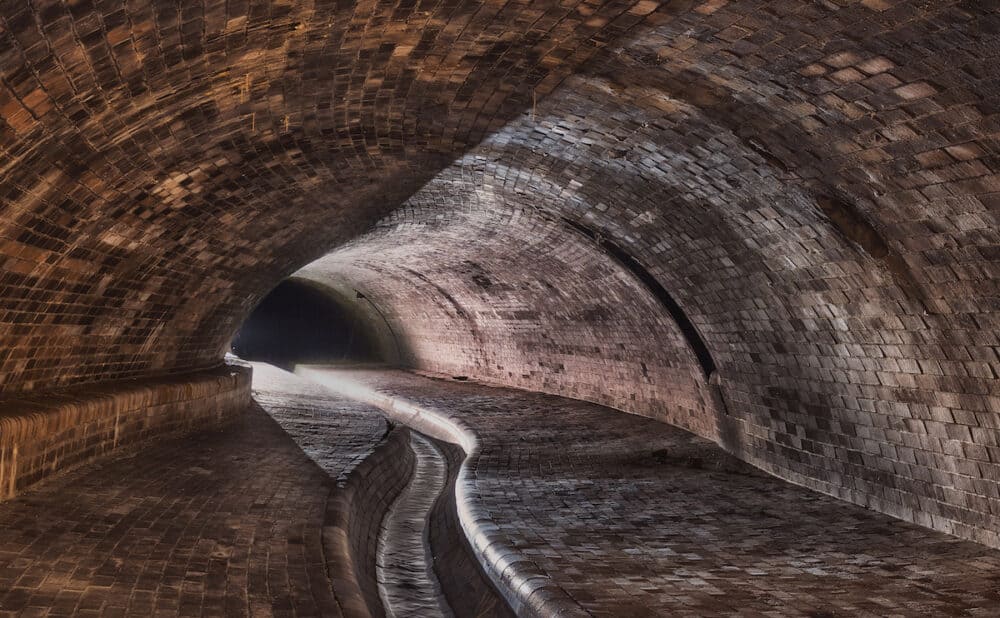
Eat your way Through Torvehallerne
Torvehallerne is a food market located in the Nørrebro district of Copenhagen. Here, you’ll discover a wide array of fresh produce, meats, seafood, and specialty ingredients, along with numerous stalls and eateries offering traditional Danish delicacies.
Before you leave, make sure you try Copenhagen’s iconic dish – Smørrebrød, an open-faced sandwich typically made with rye bread and topped with a variety of ingredients such as pickled herring, smoked salmon, liver pate, and Danish cheeses.
Another must-try dish is the traditional Danish meatball known as Frikadeller. Made with a mixture of ground pork and beef, seasoned with herbs and spices, these savory meatballs are often served with creamy potato salad or accompanied by pickles and tangy red cabbage.
Copenhagen is also famous for its pastries, with the Danish pastry or Wienerbrød being a beloved treat. These flaky and buttery pastries come in various shapes and fillings, such as cinnamon, custard, almond, or fruit.
To complete a culinary exploration of Copenhagen, sampling traditional Danish desserts like Æbleskiver is a must. These small round pancakes are often filled with apple slices, dusted with powdered sugar, and served with berry jam.
Æbleskiver are a popular treat during the Christmas season, but they can be enjoyed year-round in Copenhagen’s charming cafes and bakeries.
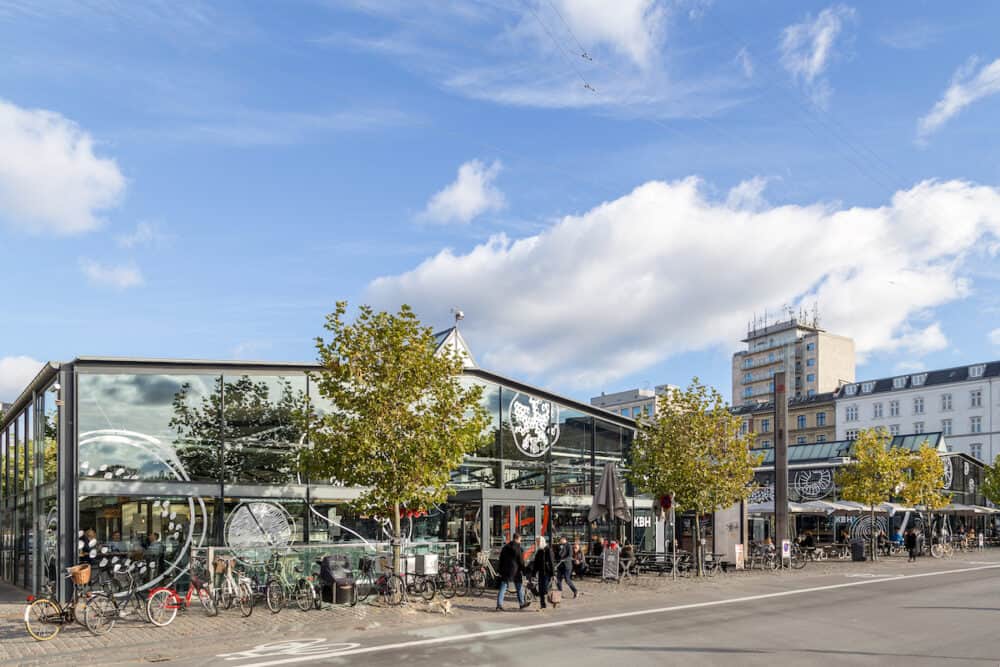
Visiting Copenhagen feels like you’re living in a royal world. From its historical significance, to gorgeous architecture and multiple palaces, you’ll feel just like the King and Queen of Denmark while exploring. And you’ll feast like them too!
Copenhagen is a part of Europe that should be explored slowly and mindfully by taking in every smell, pastry, and gold encrusted railing.
Hopefully this 3 days Copenhagen itinerary will help you plan a fun trip, even if you only have three days in Copenhagen!
Recommended tours in Copenhagen
- Private Walking Grand Tour of Copenhagen
- Social Sailing – Copenhagen Canal Tour – Exploring Hidden Gems
- Copenhagen Card DISCOVER 80 attractions and public transport
- Grand Day Trip around Copenhagen
- Pub Crawl Copenhagen
- The Copenhagen Culinary Experience Food Tour
- Copenhagen 3-hour City Highlights Bike Tour
- Good Morning, Copenhagen: Feel The Danish Hygge & Happiness
- Highlights & Hidden Gems With Locals: Best of Copenhagen Private Tour
- The Art of Baking Danish Pastry
If you’d like to save it for later, please save it to Pinterest.
